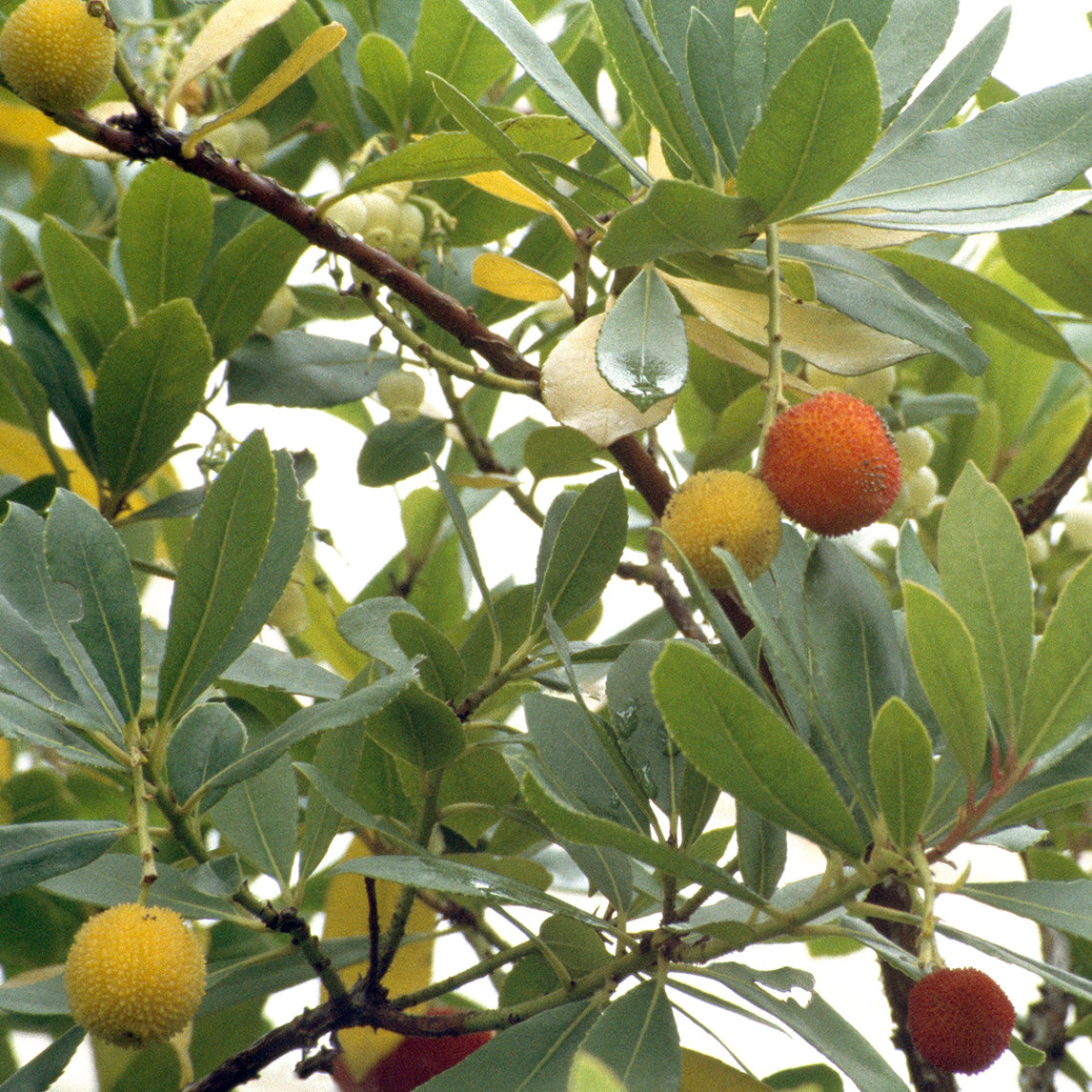Canary Island Strawberry Tree
Prefers a sunny to partly shaded position, performing best in full sun where its bark colour and fruiting are most striking. It thrives in well-drained soils and tolerates a variety of types, including sandy and loamy soils, with a preference for slightly acidic to neutral pH levels. Avoid planting in heavy clay or areas prone to waterlogging. While drought-tolerant once established, young trees benefit from regular deep watering to develop a strong root system. Mature trees generally require little supplementary watering except during extended dry periods. Fertilise in spring with a low-phosphorus, slow-release fertiliser, and apply mulch annually to conserve moisture and improve soil structure. Pruning needs are minimal — lightly shaping after flowering or removing any dead or crossing branches is sufficient to maintain health and appearance. Slow to moderate in growth, Canary Island Strawberry Tree eventually forms a small to medium-sized evergreen tree with a broad, spreading crown and beautiful, twisted branches, reaching 6–10 meters in ideal conditions. It is best suited to Mediterranean, temperate, and coastal climates, showing good tolerance to light frosts once established. Young plants may need protection from heavy frosts. Generally, pest- and disease-resistant, this hardy tree will thrive with minimal intervention if planted in the right conditions. Valued for its cinnamon-coloured bark, bird-attracting fruits, and sculptural form, Canary Island Strawberry Tree makes a superb feature in dry gardens, coastal plantings, and wildlife-friendly landscapes.


